공유하기
<2> Venezuelan Port City Coro, an Architectural Museum
- 동아닷컴
-
입력 2010년 8월 24일 00시 00분
글자크기 설정
Five-Hundred-Year Old Mud Wall City Crumbling
Task is to Preserve Historic Buildings in Bustling City
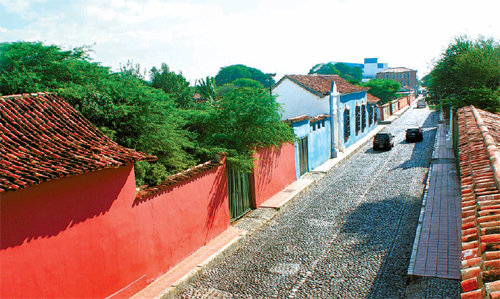
《 The village was quiet. The streets were withering under the blazing Caribbean sun. Even the walls seemed to breathe out hot fumes in the suffocating heat. The houses sitting tightly against each other and the unending line of walls on both sides of a wide road were void of even the simplest decoration. Even the intense harmony of blue, red and yellow seemed to fade in the rising heat. Why did the United Nations Educational, Scientific and Cultural Organization recognize this ordinary-looking place as a world heritage site? 》
Coro/Caracas, Venezuela = Lee Jeong Eun, Staff Writer
Coro, a port city in northern Venezuela, didn't reveal much about itself. It guided the curious visitor to seek answers for herself. Signboards were hard to find. "The historical buildings start from here," said a guide from the Venezuela Cultural Heritage Institute (Instituto del Patrimonio Cultural, IPC), but it seemed that he was just pointing his finger at a rural residential area.
Coro developed a distinctive architectural culture despite its circumstances. The colorful buildings - as if they popped out of a storybook - are the result of European and Islamic Mudejar architecture influences via Spain, coupled with Dutch baroque style brought over from Dutch-controlled Central and South American islands and indigenous architectural styles. Of greater value, however, are the walls. Known as the bahareque and tapia methods, the walls are composed of a mixture of stones, dried grass, trees and earth, on top of which are plastered a layer of mud. The walls, which sometimes include even some goat hair, are a form of architecture only found in Coro. The technique, passed on among a small group of builders, is also an intangible cultural asset.
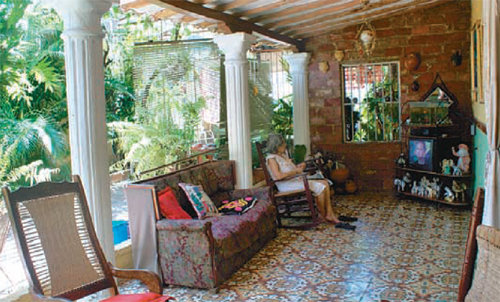
I stepped into a house with a high ceiling. In the middle of the house was a rectangular terrace, which was surrounded by a hallway decorated with plants and antique furniture. The tiles in the hallway, the patterns on the ceiling and the brick-colored roof remained intact, unchanged from their original state. The owner of the house, an old lady who had been watching television from her rocking chair in front of the terrace, turned around. "I was born here and have lived here in this world heritage building for 94 years. I am proud and happy," she said. Grandma Alicia Florence Lamores smiled.
The city became livelier as it found its way out of La Vela harbor on the seaside and came closer to the center of town. Larger two-storey buildings appeared and the burgundy-colored walls became brighter and more vivid. I saw the House of Balcony, the House of the Iron Windows, which has beautiful cast iron windows, and San Francisco Church with its high steeple. One of the houses had belonged to an aristocrat and had been used as the set of a movie about the lover of revolutionary leader Simon Bolivar.
Residents of Coro live the present in the past. They continue to make dulce leche, caramels made of goat milk and sugar, and run dry cleaning and butcher shops in their world heritage town. Such coexistence gives life to cultural assets but also acts as a deterrent in preserving their legacy. "Even if residents mend their houses in any way they please, there is no way to stop them because they are private property," said an IPC official. It is also hard to maintain the area because it covers such a large space and the buildings are scattered apart. There were remains of a broken house on the roadside, demolished to make way for a new building.
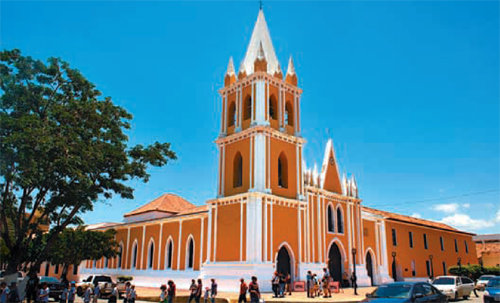
Coro isn't free from the effects of climate change either. Coro is a dry place where a large desert stands right next to the residential area. It has seen heavy rainfall lately, in a change from the past when it sometimes went without a drop of rain for seven consecutive years. After a flood destroyed parts of the area in 2005, Coro was designated as a world heritage in danger by UNESCO. "Damage increased because of an inadequate drainage system as Coro has been a dry area," said Hector Torres, president of IPC.
A bigger problem is a lack of a structured program to preserve the site. Corruption by the Venezuelan government in the past and a severe income gap between the rich and poor have worsened preservation efforts. Walls are cracked and crumbling and broken roofs and tiles are left alone without being repaired. Peeling paint on the walls revealed yellowish brown mud bricks that had straw sticking out of them. The government has also failed to hand in annual reports to the UNESCO for the past two years.
Night has already arrived. The savory smell of cooking oil seeped out from a shabby stall. Only then did officials from the IPC and UNESCO take a bite of arepa (flat, round griddled corn cakes with meat and vegetable fillings) for dinner. They had walked around Coro all day, guiding this reporter. It must be part of their effort at preservation. Perhaps Venezuela's goals to erase itself from UNESCO's world heritage in danger list will be realized sooner than expectations.

▼ Venezuela's Second World Heritage, Central University of Venezuela
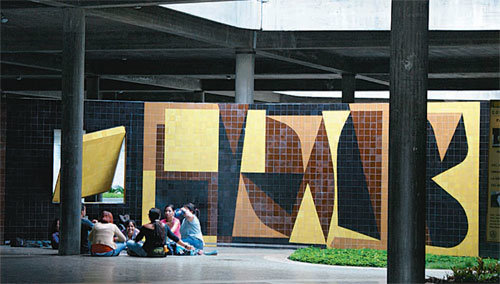
Whole Campus is Artwork, but Walls Reveal Cracks and Peeling Paint
The whole campus of this university is a piece of artwork. One architect worked on everything on the campus from the layout to each door knob. It is easy to find paintings and sculptures on this campus, anywhere from the ceilings and walls to the lawns and halls. It is the Caracas campus of the Central University of Venezuela.
The university is an integration of art and architecture that Venezuelan architect Carlos Ra?l Villanueva dreamed of and put to reality in the 1970s. Villanueva invited 28 renowned avant-garde artists of the time to contribute their pieces and oversaw the project for more than 10 years. UNESCO recognized the artistic value of the site and designated it as a world heritage property in 2000.
I wasn't impressed by the university campus at first, maybe because the buildings were scattered around such a large area. But a closer look revealed elaborate designs all around. One of the most recognized pieces of artwork on the campus is "Floating Clouds," a mobile by Alexander Calder hanging from the university's auditorium. Students had gathered in groups of two to three to chat or read in front of a large stained glass window in the lobby of the library, sculptures in front of the colleges of medicine and pharmacy and abstract paintings and decorative tiles covering the walls of each building.
But despite the university's pride as one of only two UNESCO-designated world heritage properties in Venezuela, it was easy to spot cracked walls and peeling paint across the campus. Rain leaked from the ceiling of some buildings. "It takes a lot of money to maintain and repair the buildings. The university's budget was hit by falling oil prices (oil is an important source of income for Venezuela)," said Maria Vacci, the director of Public Relations Department in the university. Some say that student protest against President Hugo Chavez's "21st century socialism" resulted in less funding for the state university from the government.
-
- 좋아요
- 0개
-
- 슬퍼요
- 0개
-
- 화나요
- 0개

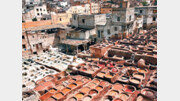




댓글 0